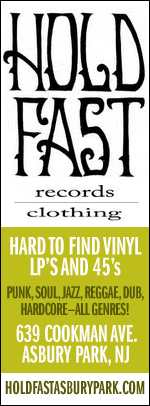
Remembering Marvin Gaye, born on this day in 1939. —Ed.
Since his tragic and premature death in 1984, Marvin Gaye’s discography has steadily risen in critical esteem, and particularly What’s Going On, his eleventh album and the enduring apex of the man’s posthumous ascension, as it’s landed atop at least one noted list of the Greatest Albums of All Time. And so, Motown/uMe has understandably endeavored with due diligence in marking the half century since that LP was originally released, their work culminating in a 50th Anniversary Edition on double vinyl, which adds six original mono single versions, plus four rare mixes of the title track, to the nine masterful selections that comprise the original album.
 As fruitful as the 1960s were for Marvin Gaye, he didn’t really hit his stride until the first half of the following decade, with What’s Going On the record that began his run as a fully-formed, mature artist. It took until the second half of the ’60s for Gaye to really find his footing inside the Motown hit machine, and there was indeed a bunch of excellent singles and even a few classic LPs during that stretch, but with his second record of the ’70s, he began transcending the boundaries of the Motown framework.
As fruitful as the 1960s were for Marvin Gaye, he didn’t really hit his stride until the first half of the following decade, with What’s Going On the record that began his run as a fully-formed, mature artist. It took until the second half of the ’60s for Gaye to really find his footing inside the Motown hit machine, and there was indeed a bunch of excellent singles and even a few classic LPs during that stretch, but with his second record of the ’70s, he began transcending the boundaries of the Motown framework.
Records like What’s Going On can be intimidating to engage with in print, mainly because they can inspire mere rephrasing of long-established observations, or to the other extreme, straining for a fresh perspective (which frequently ends up having little to do with the actual music). It’s been said that any truly great record is inexhaustible, and by that metric, there should always be something new to say about their individual qualities, but it’s just as true that many masterpieces are relatively straightforward in their brilliance.
It’s true that What’s Going On is something of a rarity in how it stylistically advances its genre while remaining pretty firmly inside the realms of pop. There’s nothing edgy about the music (a la Funkadelic), or uncompromising (like James Brown’s work of the period). Instead, Gaye favored sophisticated string arrangements that came to define soul at its most urbane in the first half of the ’70s (Isaac Hayes, Curtis Mayfield, Gamble & Huff), and as the decade progressed, served as a primary building block in the emergence of pop-disco.






 Engineered by Dennis Bovell, that release is Dub From Creation, an assured and wonderfully bent dub excursion where the core stylistic competency of the participants is elevated by sheer inspiration. Reflected in Stroud’s nickname, the presence of his melodica establishes a similarity to Augustus Pablo, but more importantly, the album’s gradual progression brings stranger atmospheres. After the unusually fast pace of “Mirage,” the record gets farther and farther out until finale “Vision of Creation” makes it emphatically clear Dub From Creation is far more than an exercise in standard dub style.
Engineered by Dennis Bovell, that release is Dub From Creation, an assured and wonderfully bent dub excursion where the core stylistic competency of the participants is elevated by sheer inspiration. Reflected in Stroud’s nickname, the presence of his melodica establishes a similarity to Augustus Pablo, but more importantly, the album’s gradual progression brings stranger atmospheres. After the unusually fast pace of “Mirage,” the record gets farther and farther out until finale “Vision of Creation” makes it emphatically clear Dub From Creation is far more than an exercise in standard dub style.
 When you make as many records as Lee Perry has, they can’t all be brilliant. Hell, the majority of them are unlikely to resonate with more than moderate levels of personal investment. I say unlikely because I’ll confess that haven’t listened to more than half of his output; Discogs lists 87 full-length albums and 97 comps, and I’ve a sneaking suspicion there are scads of releases that haven’t been logged, plus beaucoup stray singles and EPs (to say nothing of the dodgy gray-market stuff).
When you make as many records as Lee Perry has, they can’t all be brilliant. Hell, the majority of them are unlikely to resonate with more than moderate levels of personal investment. I say unlikely because I’ll confess that haven’t listened to more than half of his output; Discogs lists 87 full-length albums and 97 comps, and I’ve a sneaking suspicion there are scads of releases that haven’t been logged, plus beaucoup stray singles and EPs (to say nothing of the dodgy gray-market stuff).

 To call Lightnin’ Hopkins the byproduct of rediscovery isn’t inaccurate, but it does risk stripping the contents of its unique story. Unlike Son House, Skip James, Bukka White, and John Hurt (all from Mississippi), Texan Hopkins had only been inactive for a few years when Samuel Charters found and recorded him in Houston, and if he’d been playing since the 1930s, he was still very much in his musical prime.
To call Lightnin’ Hopkins the byproduct of rediscovery isn’t inaccurate, but it does risk stripping the contents of its unique story. Unlike Son House, Skip James, Bukka White, and John Hurt (all from Mississippi), Texan Hopkins had only been inactive for a few years when Samuel Charters found and recorded him in Houston, and if he’d been playing since the 1930s, he was still very much in his musical prime.




 The Zombies began cohering as a band around 1961-’62 in St Albans, Hertfordshire UK. By the time they debuted on record in ’64 the lineup had solidified, featuring lead vocalist-guitarist Colin Blunstone, keyboardist Rod Argent, guitarist Paul Atkinson, bassist Chris White, and drummer Hugh Grundy. That’s how it would remain until their breakup in December of ’67. Rightly considered part of the mid-’60s British Invasion, The Zombies’ stature in the context of this explosion basically rests on the success of two singles, both far more popular in the US than in the band’s home country.
The Zombies began cohering as a band around 1961-’62 in St Albans, Hertfordshire UK. By the time they debuted on record in ’64 the lineup had solidified, featuring lead vocalist-guitarist Colin Blunstone, keyboardist Rod Argent, guitarist Paul Atkinson, bassist Chris White, and drummer Hugh Grundy. That’s how it would remain until their breakup in December of ’67. Rightly considered part of the mid-’60s British Invasion, The Zombies’ stature in the context of this explosion basically rests on the success of two singles, both far more popular in the US than in the band’s home country.













































